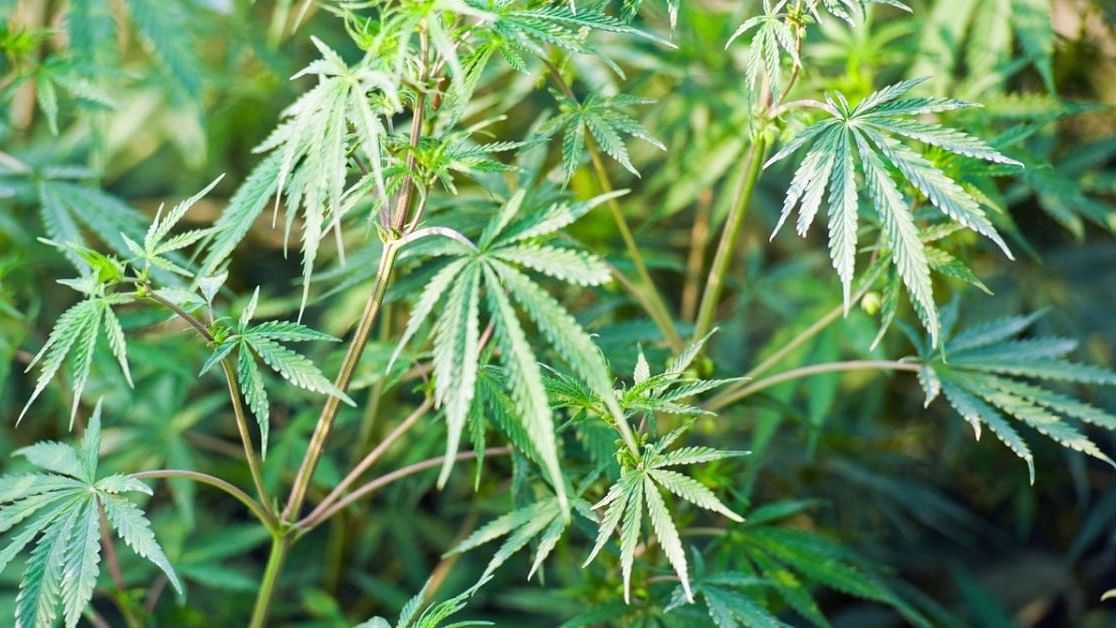
A marijuana plant.
Credit: iStock photo.
By Lisa Jarvis
Vice President Kamala Harris this week confirmed she supports the legalisation of marijuana. It’s a change of heart that acknowledges the decades of injustice wrought by the criminalisation of small amounts of weed and follows a broader shift in sentiment about cannabis in the US. And it makes sense — if it is accompanied by a massive effort to understand how pot affects public health.
Young adults are increasingly eschewing alcohol and cigarettes in favor of cannabis. According to the most recent data from the annual Monitoring the Future survey, weed has never been this popular. Another analysis found that among all adults, daily or near-daily cannabis use in 2022 for the first time surpassed regular alcohol consumption.
Credit: Bloomberg Opinion
Those trends surely would intensify if federal restrictions were lifted. That means it’s crucial to ground any policy shift in science. We’ve racked up decades of evidence demonstrating how smoking and alcohol hurt our health, yet the data on cannabis and health are shockingly thin. That leaves consumers, medical providers, and policymakers to guess at what kind of consumption to consider harmless and what to worry about.
I recently sat down with Nora Volkow, director of the National Institute on Drug Abuse, the arm of the National Institutes of Health responsible for setting the research agenda on illicit substances and addiction. Part of our discussion centered on the knowledge gaps around the health effects of cannabis — a legacy of policies that made it difficult or impossible to study the drug, as well as a shifting landscape of products boasting a potency that is wildly different from what boomers, Gen Xers and even millennials may have toked as teens.
The open questions are many. To rattle off a few: What is the prevalence of cannabis use disorder and who is most vulnerable to it? What’s the best way to treat it? How does cannabis use intersect with mental illness? How do various dosages of cannabis influence patterns of consumption, and how are those patterns shaped by whether the drug is inhaled or eaten? What are the near- and long-term health consequences of regular consumption of highly potent THC products?
Credit: Bloomberg Opinion
But on the most basic level, there’s a question that every cannabis consumer should know the answer to: What’s “safe” when it comes to cannabis consumption? As Volkow points out, health officials have clear guidelines to offer the public about alcohol — everyone’s doctor has a handy chart from the CDC outlining just how many drinks per week is considered safe. And those thresholds have been lowered over time as more data clarifies the differences between men and women — or shows, for example, a connection between alcohol consumption and certain cancers.
But when it comes to THC? We’ve got next to nothing. And the evidence we do have, like the recent spate of studies linking frequent cannabis use to poorer heart health, tends to rely on electronic health records or older survey data. That’s not the gold standard of scientific research — it’s just what’s available.
And then there’s cannabis and kids. In 2022, nearly a third of high school seniors had used pot in the last year, and 6% said that in the last month they had consumed it daily. Cannabis-related emergency room visits among kids, teens and college-age young adults have been on the rise, particularly among girls.
THC hijacks parts of the endogenous cannabinioid system, the network of receptors spanning our brain and body that are involved with crucial functions like learning, memory and processing — a network directly involved in the formation of the human brain. That’s reason enough to be cautious about use in adolescents, Volkow says. (The same message holds true for use during pregnancy, another area of cannabis research with significant knowledge gaps.)
And cannabis usage among adolescents has been linked to a range of negative outcomes. One recent analysis of more than 60 studies concluded the evidence was reasonably certain that pot use among teens is associated with missing more school, lower grades and a lower likelihood to graduate from high school or go to college.
The counterargument has long been that kids who gravitate toward weed have underlying vulnerabilities that would have led to those same outcomes, Volkow says. To get to an answer, NIH has been running a huge study following more than 10,000 kids from the age of 9 or 10 over the course of their adolescence. Geared at understanding how childhood experiences and biology influence brain development, one of the trial’s many goals is to learn how cannabis exposure affects everything from cognitive performance to social interactions and academic outcomes. Getting those answers is crucial, Volkow says.
In an era where cannabis can be purchased legally in so many states (and, under Harris’s plan, could be available nationwide), the public deserves to know when their use could be putting their health at risk.
As the political tide around cannabis shifts, the support for the science needs to come along with it. Otherwise, we’re all just guessing about the long-term health implications. That doesn’t seem like a great public health strategy.